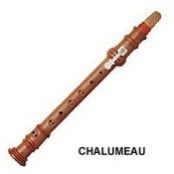17th Century
18th Century

The original Denner clarinets had two keys and could play a chromatic scale. Still, various makers added more keys to improve tuning, easier fingerings, and a slightly more extensive range. Denner's son, Jakob, followed his dad's path in creating instruments with two keys.
He also gave the clarinet a flared bell, instead of the cylinder one on the chalumeau, to help project the sound. It was also given a barrel-shaped bulge below the mouthpiece.
Clarinets were soon accepted into orchestras. Later models had a mellower tone than the originals, typically with eight holes and five keys. Mozart liked the sound of the clarinet such that he wrote much music for it.
He also gave the clarinet a flared bell, instead of the cylinder one on the chalumeau, to help project the sound. It was also given a barrel-shaped bulge below the mouthpiece.
Clarinets were soon accepted into orchestras. Later models had a mellower tone than the originals, typically with eight holes and five keys. Mozart liked the sound of the clarinet such that he wrote much music for it.
19th Century

By the time of Beethoven, the clarinet had become a standard fixture in the orchestra. The subsequent significant development in the clarinet's history was the modern pad's invention. Early clarinets covered the tone holes with felt pads.
However, the pads had to be kept to a minimum due to leaked air, so the clarinet was severely restricted in the notes could be played with a good tone.
A Russian-born clarinettist and inventor, Iwan Müller 1806, developed and added the ligature as part of the clarinet to hold a reed onto the instrument. He also installed the thumb rest so that the angle between the clarinet and the body didn't have to be so big. In 1812, he developed a new pad covered in leather or fish bladder.
This was completely airtight, so the number of keys could be increased enormously. He designed a new clarinet with seven finger holes and thirteen keys. This allowed the clarinet to play in any key with near-equal ease. Many enhancements were made to Mueller's clarinet during the 19th century, such as the Albert and Baermann systems (Clarinet Key work and Fingering), all keeping the same basic design.
However, the pads had to be kept to a minimum due to leaked air, so the clarinet was severely restricted in the notes could be played with a good tone.
A Russian-born clarinettist and inventor, Iwan Müller 1806, developed and added the ligature as part of the clarinet to hold a reed onto the instrument. He also installed the thumb rest so that the angle between the clarinet and the body didn't have to be so big. In 1812, he developed a new pad covered in leather or fish bladder.
This was completely airtight, so the number of keys could be increased enormously. He designed a new clarinet with seven finger holes and thirteen keys. This allowed the clarinet to play in any key with near-equal ease. Many enhancements were made to Mueller's clarinet during the 19th century, such as the Albert and Baermann systems (Clarinet Key work and Fingering), all keeping the same basic design.






